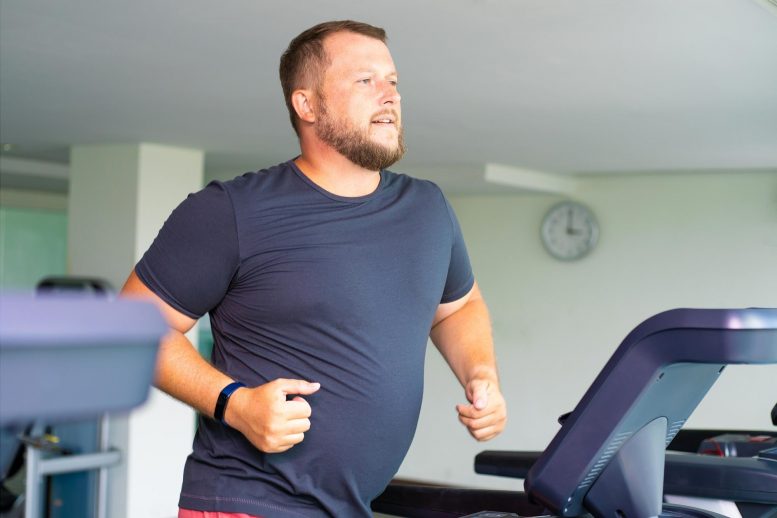
The ESC consensus document suggests tailored activities based on an individual’s current blood pressure level.
The first personalized advice on the most effective exercise to lower blood pressure was published in the European Journal of Preventive Cardiology, a journal of the European Society of Cardiology (ESC). The ESC consensus document recommends specific activities according to an individual’s current blood pressure level.
One in four heart attacks is caused by high blood pressure. It is estimated that by 2025, around 60% of the world’s population will have hypertension. While it is widely accepted that exercise lowers blood pressure, until now recommendations have focused on the amount of exercise per week, without considering an individual’s starting blood pressure level.
This consensus document, for the first time, used an analysis of the highest quality evidence to produce detailed guidance on how to lower blood pressure in people with hypertension, high-normal blood pressure, and normal blood pressure.
“The goal of the recommendations for all three groups is primarily to lower blood pressure,” said first author Professor Henner Hanssen of the University of Basel, Switzerland. “Ultimately, through blood pressure reduction, we can reduce the risk of heart attack, stroke and death from cardiovascular disease – thereby spending more years of life in good health.”
For each of the three groups, the paper outlines the first exercise priority for lowering blood pressure, followed by alternatives that still achieve reduction but to a lesser extent.
For people with hypertension (blood pressure of at least 140/90 mmHg), aerobic exercise is the most effective method. This includes activities such as walking, running, cycling, or swimming. “In people with hypertension, the blood pressure reduction that can be achieved with aerobic exercise is the same, or even slightly more, than taking a single antihypertensive medication,” said Professor Hanssen.
In those with high-normal blood pressure (130-139/85-89 mmHg), dynamic resistance training is the first priority. This refers to strength training typically involving at least six large muscle groups where muscle contraction results in movement – for example, lifting weights, squats, and push-ups.
People with normal blood pressure (less than 130/84 mmHg) benefit most from isometric resistance training. This involves static contraction of the muscles – for example, the handgrip exercise. “People with normal blood pressure, but who are at raised risk of developing hypertension, may be particularly motivated to keep their levels down,” said Professor Hanssen.
He continued: “Obese individuals are very likely to develop high blood pressure if obesity persists over the years. Healthy individuals with a hypertensive parent are also at risk of developing high blood pressure, as are women who had high blood pressure during pregnancy (gestational hypertension). People in these groups can postpone or even prevent hypertension by exercising.”
Professor Hanssen noted that physical activity should be done regularly to sustain the benefits. He said: “For most exercises, the blood pressure lowering effect lasts for about 24 hours, similar to medication, so it’s best to be active every day if possible.”
Reference: “Personalized exercise prescription in the prevention and treatment of arterial hypertension: a Consensus Document from the European Association of Preventive Cardiology (EAPC) and the ESC Council on Hypertension” by Henner Hanssen, Henry Boardman, Arne Deiseroth, Trine Moholdt, Maria Simonenko, Nicolle Kränkel, Josef Niebauer, Monica Tiberi, Ana Abreu, Erik Ekker Solberg, Linda Pescatello, Jana Brguljan, Antonio Coca and Paul Leeson, 24 March 2021, European Journal of Preventive Cardiology.
DOI: 10.1093/eurjpc/zwaa141
Disclosures: A.C. received honoraria for lectures in symposia and educational activities sponsored by unrestricted grants from Abbott, Berlin-Chemie, Biolab, Boehringer-Ingelheim, Ferrer, Menarini, Merck and Sanofi-Aventis. M.S. reports personal fees from Novartis and Sanofi-Aventis. L.P. is lead author of the American College of Sports Medicine recent Pronouncement. All other authors have nothing to disclose.









Honestly? So science has finally caught up with the obvious- that exercise helps a healthy heart. Next, they’ll be telling us that nutrition is important, too. No wonder so many of us refuse to follow the science when it is lagging so far behind the common sense of the common man and woman!
science would be king if it could patent exercise. If only…
Find Justin wuranjiu on facebook her technique work great to lower blood pressure.